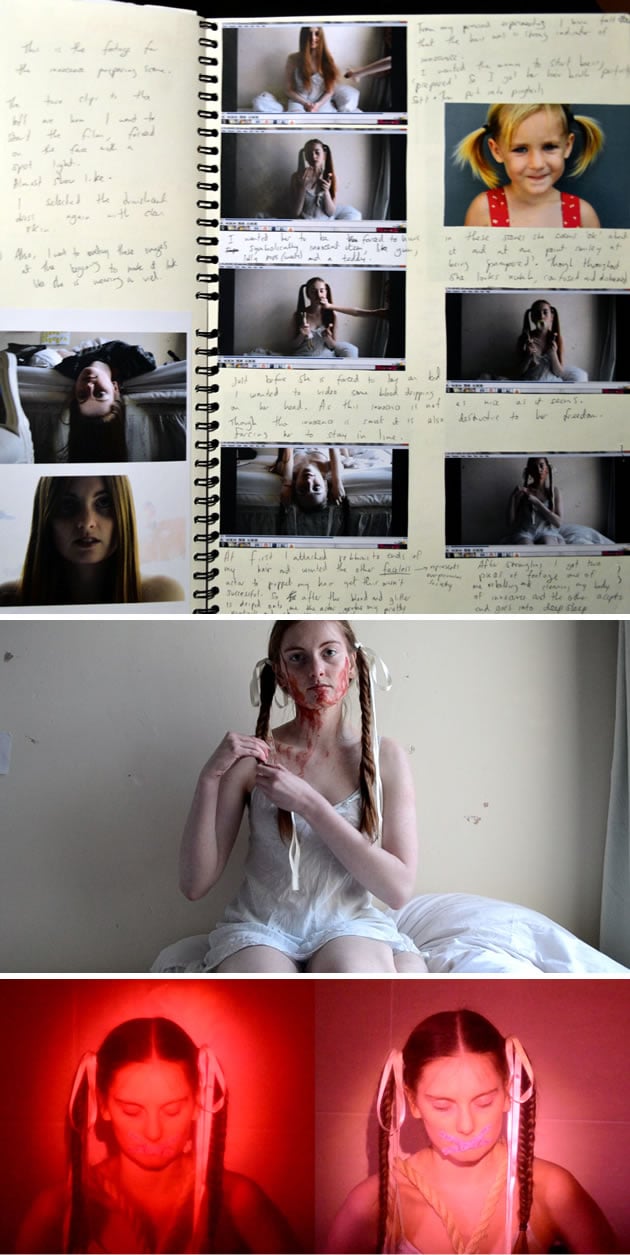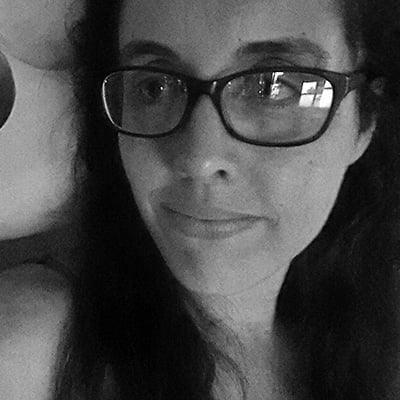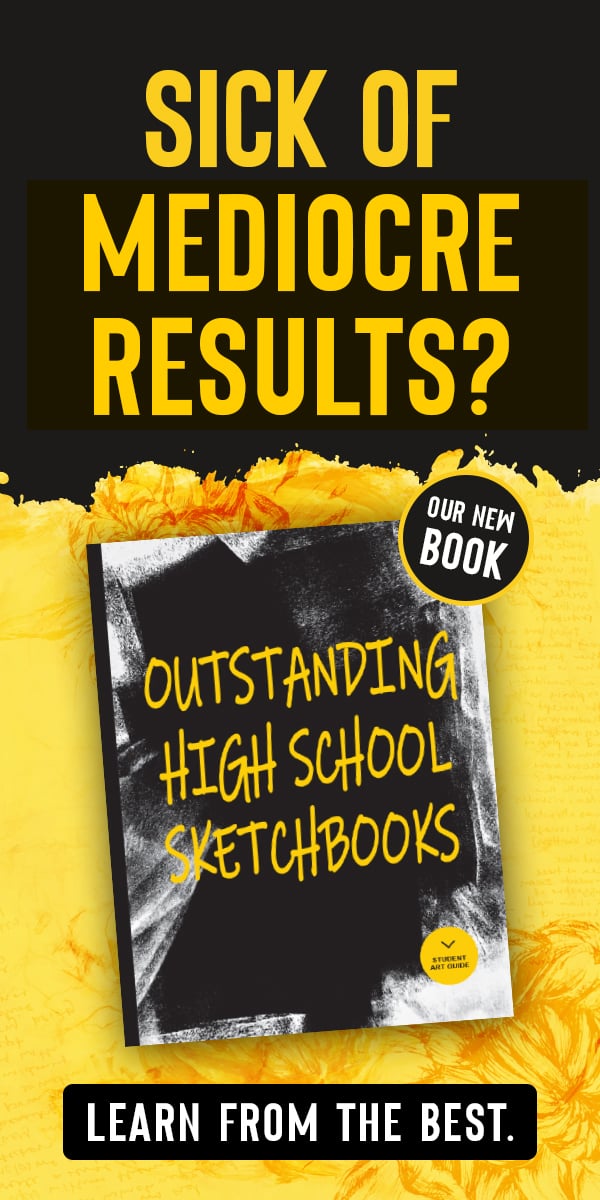Last Updated on April 2, 2023
As technology changes, a growing number of students are exploring moving image as part of their high school Art courses. This is a new area for many Art Departments and it can be unclear how to best approach this. We are delighted to share the work of A Level Art and Design student Charlotte Cook, who gained 100% (A*) while studying at South Hunsley School, North Ferriby, United Kingdom.
One of Charlotte’s sketchbook pages is included in our new book: Outstanding High School Sketchbooks. This book has high-resolution images so that fine details and annotation are clear, making it an excellent resource for students and schools. Learn more!
Charlotte began A2 Art and Design with an excellent track record: A* in GCSE Art and 100% in AS Level Art and Design (AQA). Although she had no experience with film-making and knew no other students who had specialised in this area, she understood that a moving image project must include the same development process, aesthetic qualities and technical skill as a traditional art project. We interviewed Charlotte about her A2 Coursework project: her answers illuminate the learning curve that is required and highlight the similarities and differences between a moving image and traditional Fine Art project.

What drew you towards creating a film-based Art project?
Charlotte: As this was my final unit, I wanted to bring together everything I had explored over the two years – perhaps like a conclusion. I wanted to face a challenging and mature project, both skill-wise and intellectually; this I have found to be a staple to all my favourite and successful work – especially when I am pushed to the limit!
During GCSE I had unveiled an affinity with Photography, which quickly became an important element for my creative process, alongside more traditional inking. I enjoyed having something digital to express abstract ideas, and I really like working on the computer.
Nevertheless, lower-down school, it had never occurred to me that it was possible to work in a film format, it had always seemed beyond me, and I did not see how it would relate to my work. Additionally, none of the students I knew had ever used film either, making it an intimidating medium to approach. Therefore, wanting a challenge, and being inspired by various artists (Kara Walker, Tejal Shah, Daria Martin…) film became the core of this project.

How did you plan, express and develop ideas through moving image and how did this differ from your earlier Art projects?
Charlotte: Like other projects, I used a sketchbook. However, the interaction with my sketchbook differed greatly.
I wrote more, and illustrated more ‘moments’.
I think this is because I found it easier to quickly sketch a composition and then write lots about the sound and movement – sound being incredibly more important than I had thought! Sometimes I would focus on the sound as a separate element, and then unify it with the visuals after.

Sculpting ‘props’ is something which film encouraged. As I would be filming in a three-dimensional space, three-dimensional objects were suitable – perhaps it is like making a collage of the space.
Within my sketchbook, I would have vague ideas of ‘moments’ and of the structure, thinking of the imagery, and of what I wanted to achieve. I would film as much as I could, and shoot things in different ways, trying out various lighting and angles, like when working with Photography. The rest of the development would happen digitally, and outside of the sketchbook. Thus, my sketchbook was used more for documenting this development and reflecting on what I had produced and how I could refine my ideas further.
Post-production was the most important element for my project, and this is how my ideas were realised. I would keep in mind what I wanted to portray and then experiment! Splicing footage together, breaking visuals from sound and merging it back in various ways. Do keep in mind that, like on other digital software, you work in layers, and footage can be superimposed. Inside the software I would organise things on a timeline, and almost make patterns on this. Layering sound and leaving space.
Compared to other projects, I feel this had so much more complexity to it, which meant there was a lot of planning.
Which programmes and tools did you use to create your projects?
Charlotte:
- Camera: Nikon D3100 with AF-S VR DX 18-55mm lens (available from Amazon UK and Amazon.com – affiliate links)
- Editing software: Adobe Premiere Pro CS6
I used my camera for the footage, and for recording sound.
I would recommend having VCL Media Player installed. You can deinterlace, crop, covert videos, take snapshots from footage etc. It was really useful!
Similar to painting for the first time, or working with Photography, it is about experimenting and trying out new things. Sometimes I would see other artists and filmmaker do something and I would want to utilise it for my own work. I would then look online for tutorials and see what could produce similar effects.
It took more time and effort compared to other projects I have done before. It is common to find strange things happening while you are trying to edit and having to read through 5 articles to find out what is going on. Nevertheless, these unexpected occurrences can be interesting too; it is all part of the creative process.

What advice do you have for other high school Art students who want to complete a digital moving image / film based project?
Charlotte:
- Definitely try to carry your camera everywhere – use it like a sketchbook – capturing visuals and sound
- I really liked collecting different sound samples when I went for walks
- Back up your work and save lots of different copies, you do not want yourself saving over the same file and making a strange mistake that you cannot get rid of!
- Try getting your hands on a tripod. This will make it easier to get footage in darker places and make your work look more professional and sophisticated
- Do use your sketchbook and look at other film artists
Even though I worked through the computer, film can be less digital if you want it to be and there are lots of different ways of creating moving image, for example stop-motion animation.

If you wish to see more of Charlotte’s work, please view her A* GCSE Art project!

